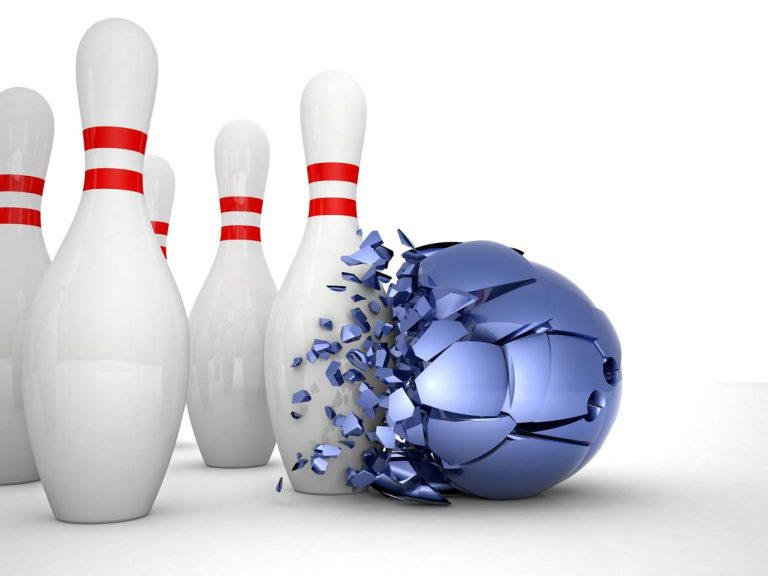Compare Duckpin Bowling Balls to 10 Pin Bowling Balls: A Comprehensive Guide
When it comes to bowling, there are a variety of different games to choose from. Two of the most popular are duckpin bowling and 10-pin bowling. While the games share some similarities, they also have some key differences that set them apart. One of the biggest differences between the two is the size and weight of the balls used.
Duckpin bowling balls are smaller and lighter than 10-pin bowling balls. They typically weigh between 2 and 4 pounds, while 10-pin bowling balls weigh between 6 and 16 pounds. The smaller size and lighter weight of the duckpin bowling balls can make the game more challenging, as it requires greater accuracy and precision to knock down the pins. However, some people find that the smaller balls are easier to handle and control, making it a more enjoyable experience for them.
History and Origins
Development of Duckpin Bowling
Duckpin bowling is a variation of ten-pin bowling that originated in Baltimore, Maryland, in the early 1900s. Wilbert Robinson, a baseball player and manager, is credited with inventing the game in 1900. Robinson was looking for a way to entertain his team during their off-season when he came up with the idea of using a smaller ball and shorter pins. The smaller ball made it easier for children to play, and the shorter pins made it more challenging for adults.
The game quickly gained popularity in Baltimore and spread to other cities on the East Coast, particularly in the Northeastern United States. Duckpin bowling alleys were built in many cities, including Lynn, Mass. The game also made its way to Indiana and other parts of the country.
Evolution of Ten-Pin Bowling
Ten-pin bowling has a longer history than duckpin bowling. The game evolved from various forms of bowling that were popular in Europe in the Middle Ages. The modern version of ten-pin bowling was developed in the United States in the late 1800s. The game was standardized in 1895 by the American Bowling Congress.
Ten-pin bowling quickly became popular across the country, and by the 1920s, there were over 12,000 bowling alleys in the United States. The game was also popular in other parts of the world, particularly in Canada and Japan.
Despite the popularity of ten-pin bowling, duckpin bowling remained popular in the Northeastern United States. The smaller ball and shorter pins made the game more challenging and required a different set of skills than ten-pin bowling. Today, there are still many duckpin bowling alleys in the Northeastern United States, and the game continues to be enjoyed by people of all ages.
Equipment and Gameplay
When it comes to bowling, the equipment used plays a crucial role in the game. Both duckpin bowling and ten-pin bowling have their own unique set of equipment that differs in size, weight, and design.
Duckpin Bowling Balls and Pins
Duckpin bowling balls are smaller and lighter than ten-pin bowling balls. They typically weigh between 2-4 pounds and have no finger holes. The smaller size of the ball makes it easier to handle, but also harder to knock down the pins. The pins used in duckpin bowling are also smaller, measuring approximately 9 inches high and 4.75 inches wide. The National Duckpin Bowling Congress regulates the size and weight of duckpin bowling balls and pins.
Ten-Pin Bowling Balls and Pins
Ten-pin bowling balls are larger and heavier than duckpin bowling balls. They typically weigh between 10-16 pounds and have finger holes that allow the bowler to grip the ball better. The larger size of the ball makes it harder to handle, but also easier to knock down the pins. The pins used in ten-pin bowling are also larger, measuring approximately 15 inches high and 4.75 inches wide.
In addition to the size and weight differences, the materials used to make the balls also differ. Duckpin bowling balls are typically made of a rubber material, while ten-pin bowling balls can be made of a variety of materials including plastic, urethane, and reactive resin. The type of material used can affect the ball’s performance on the alley.
Overall, the equipment used in duckpin bowling and ten-pin bowling is designed to suit the specific needs of each game. Whether you prefer the smaller, lighter ball of duckpin bowling or the larger, heavier ball of ten-pin bowling, both games offer a unique and enjoyable experience for bowlers of all skill levels.
Rules and Scoring
Scoring in Duckpin Bowling
Duckpin bowling and 10-pin bowling have different rules and scoring systems. In duckpin bowling, you get three rolls per frame instead of two, and there are ten frames in a game. The maximum score you can get is 300, which is achieved by getting 12 strikes in a row. However, this is very difficult to achieve due to the size of the balls and pins used in duckpin bowling.
Scoring in duckpin bowling is also different from 10-pin bowling. If you knock down all ten pins with your first roll, it is called a strike, and you get 10 points plus the total number of pins you knock down with your next two rolls. If you knock down all ten pins with your second roll, it is called a spare, and you get 10 points plus the total number of pins you knock down with your next roll. If you do not knock down all ten pins in a frame, you get one point for each pin you knock down.
Scoring in Ten-Pin Bowling
In ten-pin bowling, you get two rolls per frame, and there are also ten frames in a game. The maximum score you can get is 300, which is achieved by getting 12 strikes in a row. Scoring in ten-pin bowling is different from duckpin bowling. If you knock down all ten pins with your first roll, it is called a strike, and you get 10 points plus the total number of pins you knock down with your next two rolls. If you knock down all ten pins with your two rolls, it is called a spare, and you get 10 points plus the total number of pins you knock down with your next roll. If you do not knock down all ten pins in a frame, you get one point for each pin you knock down.
Overall, both duckpin and 10-pin bowling have their own unique rules and scoring systems. Understanding these rules and scoring systems is important if you want to improve your game and score higher.
Tactical and Physical Aspects
Skills and Techniques
When it comes to skills and techniques in bowling, both duckpin and 10-pin bowling require different approaches. In duckpin bowling, the smaller and lighter ball requires a more precise and accurate throw. The lack of finger holes in the ball means that the bowler must rely on a different grip technique. This requires a different level of skill and technique compared to 10-pin bowling. In 10-pin bowling, the larger and heavier ball requires more power and strength to throw accurately. The finger holes in the ball allow for a better grip, which is important for precision and accuracy.
Physicality and Ball Characteristics
The physicality and ball characteristics of duckpin and 10-pin bowling are also different. In duckpin bowling, the ball is smaller and lighter, which means that it requires less power to throw. However, the smaller size also means that the ball has less momentum, which can make it more difficult to knock down all the pins. In 10-pin bowling, the ball is larger and heavier, which requires more power to throw. The added weight and size also mean that the ball has more momentum, which can help knock down more pins.
The weight of the ball is also an important factor to consider. In 10-pin bowling, the ball can weigh anywhere between 6 and 16 pounds. This allows for a range of weights to accommodate different skill levels and playing styles. In duckpin bowling, the ball weighs between 3 lb 6 oz and 3 lb 12 oz, which is significantly lighter than the lightest 10-pin ball. This means that duckpin bowling requires less physical strength to play.
In terms of hook, both duckpin and 10-pin bowling require different techniques. In duckpin bowling, the ball has less hook potential due to its smaller size and lighter weight. This means that the ball is less likely to curve as it travels down the lane. In 10-pin bowling, the larger and heavier ball has more hook potential, which allows for more control over the ball’s trajectory.
Overall, both duckpin and 10-pin bowling have their own unique challenges and difficulties. The choice between the two ultimately comes down to personal preference, skill level, and playing style. With practice and experience, both styles of bowling can be mastered by beginners and pros alike.




